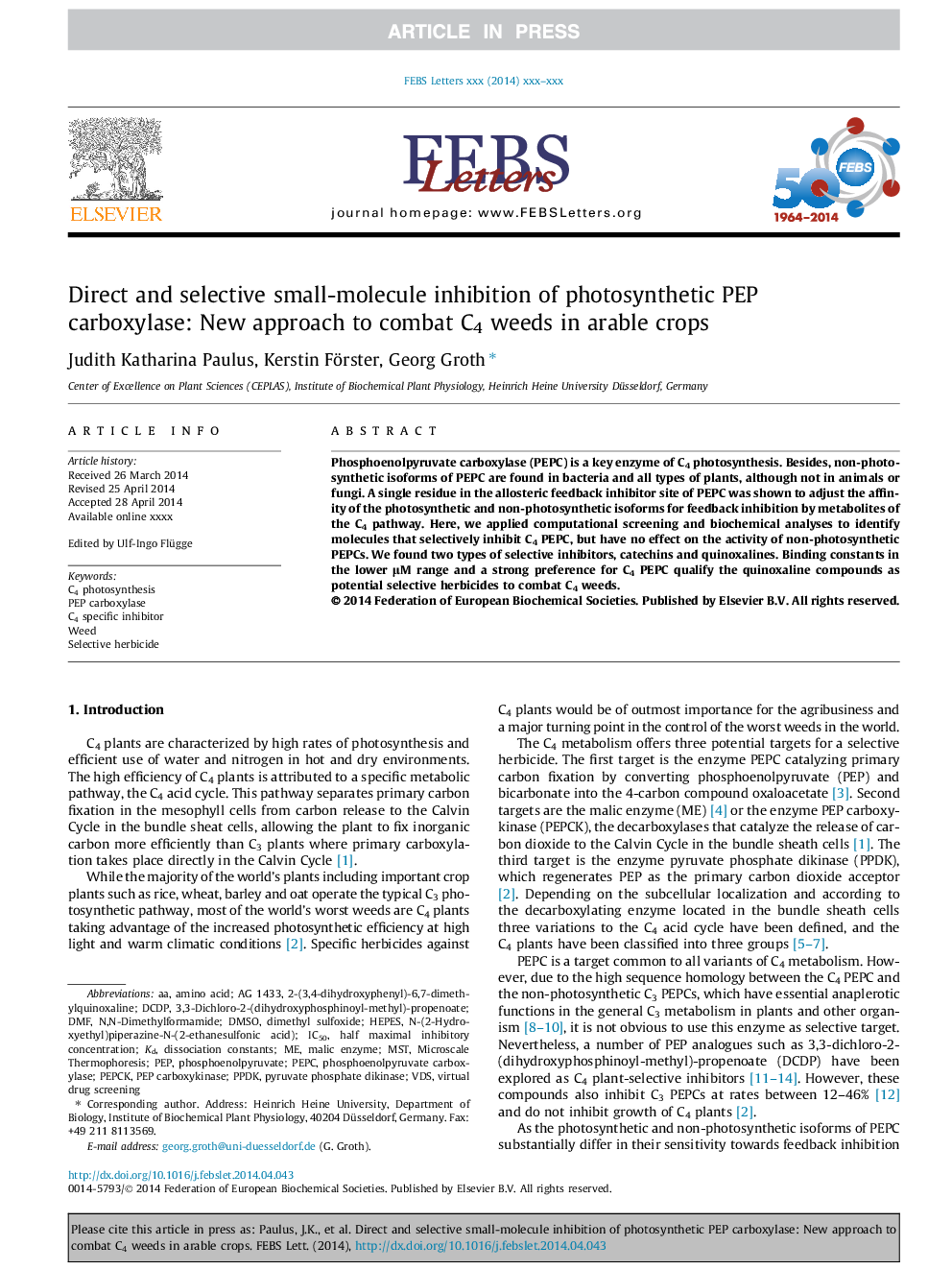| Article ID | Journal | Published Year | Pages | File Type |
|---|---|---|---|---|
| 10870478 | FEBS Letters | 2014 | 6 Pages |
Abstract
Phosphoenolpyruvate carboxylase (PEPC) is a key enzyme of C4 photosynthesis. Besides, non-photosynthetic isoforms of PEPC are found in bacteria and all types of plants, although not in animals or fungi. A single residue in the allosteric feedback inhibitor site of PEPC was shown to adjust the affinity of the photosynthetic and non-photosynthetic isoforms for feedback inhibition by metabolites of the C4 pathway. Here, we applied computational screening and biochemical analyses to identify molecules that selectively inhibit C4 PEPC, but have no effect on the activity of non-photosynthetic PEPCs. We found two types of selective inhibitors, catechins and quinoxalines. Binding constants in the lower μM range and a strong preference for C4 PEPC qualify the quinoxaline compounds as potential selective herbicides to combat C4 weeds.
Keywords
DMFPPDKVDSDCDPPEP carboxykinasePEPCPEPCKPEPIC50HEPESMSTDMSON,N-dimethylformamidePEP carboxylaseamino acidmalic enzymeMicroscale thermophoresisDissociation constantsDimethyl sulfoxideWeedC4 photosynthesisphosphoenolpyruvatePhosphoenolpyruvate carboxylasehalf maximal inhibitory concentrationPyruvate phosphate dikinase
Related Topics
Life Sciences
Agricultural and Biological Sciences
Plant Science
Authors
Judith Katharina Paulus, Kerstin Förster, Georg Groth,
